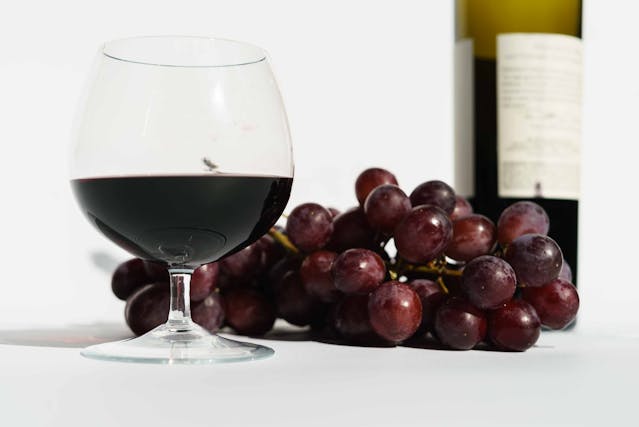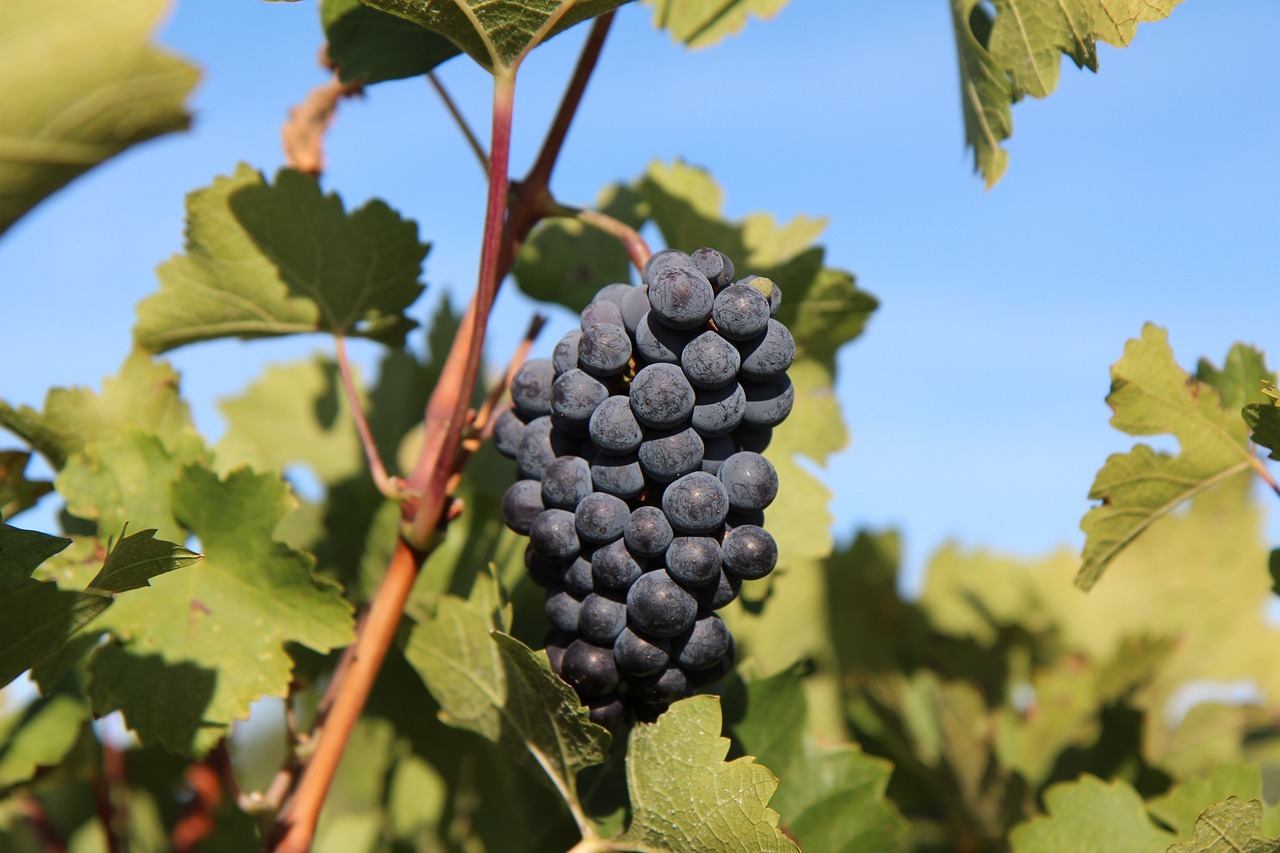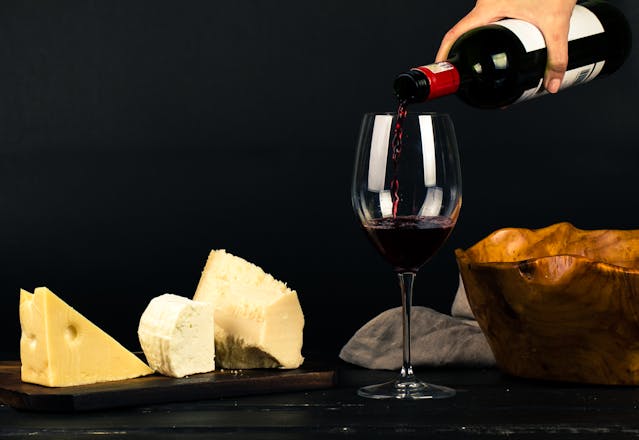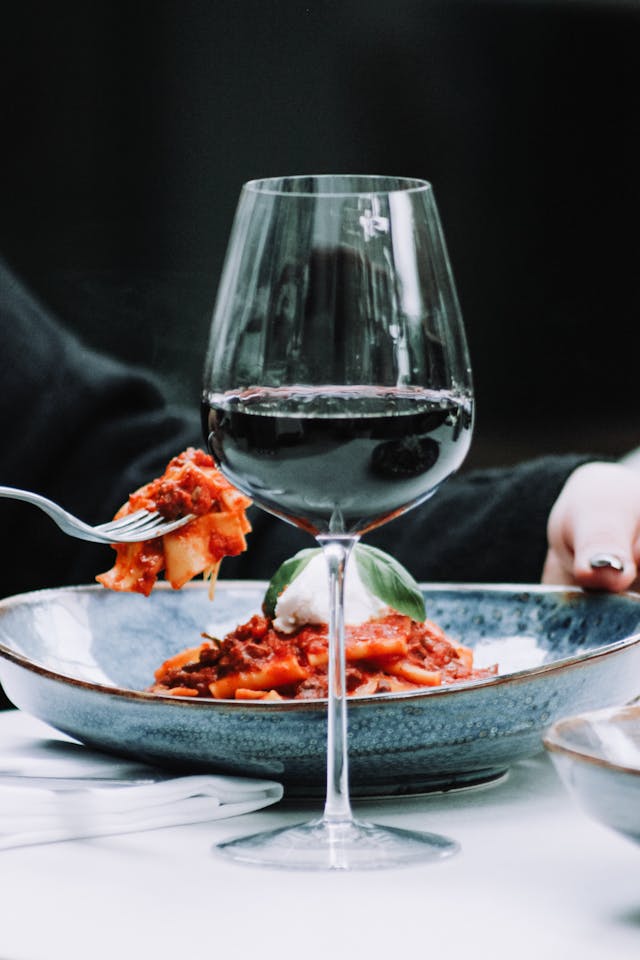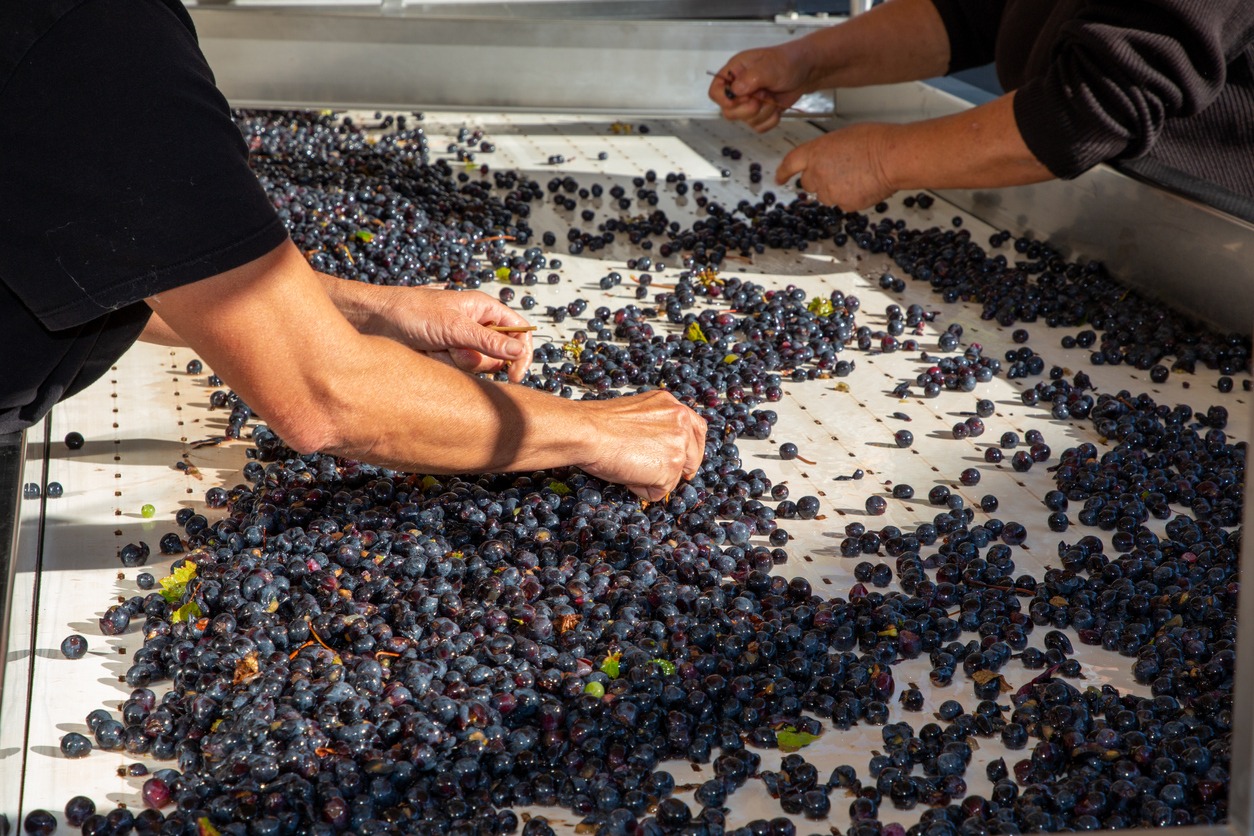Understanding the distinction between varietal and blended wines is a key aspect of appreciating the artistry of winemaking. Varietal wines are made from a single grape variety and often bear the name of that grape, providing a specific flavor profile characteristic to that grape. Examples include a Pinot Noir or a Chardonnay, where each aims to reflect the unique attributes and qualities of the grape from which it is produced.
Blended wines, on the other hand, result from the combination of two or more grape varieties. The craft of blending is akin to a symphony, where the winemaker carefully selects and combines different grapes to achieve a complex and harmonious flavor profile. This technique allows for a broader range of taste experiences and can result in a more balanced and layered wine.
The practice of blending has deep roots in wine history, often bound by traditions such as those in the Bordeaux region, where a blend might consist of Cabernet Sauvignon, Merlot, and several other varieties. Similarly, laws and regulations can influence these designations, allowing a wine to be labeled as a varietal even if a certain percentage of it is comprised of other grape varieties, depending on regional wine labeling laws. Whether a consumer prefers the pure expression of a single grape or the intricate composition of a blend, both styles represent the height of winemaking craft and contribute to the rich tapestry of the wine world.
Fundamentals of Varietal and Blended Wines
Exploring the core differences between varietal wines and blended wines reveals the nuanced art of winemaking. A varietal wine emphasizes the characteristics of a single grape, while a blend showcases the winemaker’s skill in harmonizing multiple varietals.
Varietal Wine Defined
Varietal wine is a product made primarily from a single grape varietal. By law, the percentage of the grape variety may vary to be labeled as varietal, typically requiring at least 75-85% of the specified type. This focus on one grape allows the unique flavors and characteristics of that varietal to shine through, offering a pure expression of the grape’s profile.
- Example: A Red Burgundy, which is made from 100% Pinot Noir.
Blended Wine Explained
Blended wine, in contrast, is crafted from two or more grape varieties. Winemakers create blends to achieve a balance of flavors, textures, and aromas that no single varietal can provide alone. A blend might combine the robustness of a Cabernet Sauvignon with the softness of Merlot. The skill of the winemaker is paramount in deciding the precise proportions of each grape to reach the desired complexity and style.
- Example: A Red Bordeaux, which combines Cabernet Sauvignon, Cabernet Franc, Merlot, Malbec, and Petit Verdot.
Comparative Overview
While varietal wines are embraced for their straightforward representation of a grape’s profile, blends are appreciated for their complexity and depth. Winemakers often use blending as a tool to craft wines with greater balance, structure, and layering of flavors.
- Varietal: Single grape focus, purity of flavors.
- Blends: Complexity and harmonious balance of multiple grapes.
By understanding these fundamentals, one can appreciate the intention behind each style of wine and the expertise involved in their creation.
Grape Varieties and Their Roles
The distinction between varietal wines and blended wines is grounded in the choice of grape varieties used. Varietal wines showcase a single grape variety, while blends benefit from the combined characteristics of multiple varieties.
Common Varietal Grapes
Cabernet Sauvignon: Known for its bold flavors and high tannin content, Cabernet Sauvignon is often considered the king of red grapes. It’s robust enough to be sold as a single varietal, particularly from regions like Napa Valley and Bordeaux.
Chardonnay: This white wine grape is versatile and reflects the region it’s grown in. As a single varietal, Chardonnay can range from buttery and oak-infused to bright and minerally, depending on the winemaking methods.
Pinot Noir: Delicate and notoriously difficult to grow, Pinot Noir thrives in cooler climates such as Burgundy and Oregon. It is highly appreciated as a varietal wine for its complex bouquet of red fruits, flowers, and earthy notes.
Popular Grapes for Blends
Merlot: Often blended with Cabernet Sauvignon to soften its tannic structure, Merlot brings plum and cherry flavors, along with a velvety texture to the resultant wine.
Sauvignon Blanc: While also popular as a varietal, Sauvignon Blanc is sometimes blended with Semillon, especially in Bordeaux, to add zest and herbaceous qualities.
Syrah (also known as Shiraz): Known for peppery and spicy notes, Syrah is frequently blended with grapes like Grenache and Mourvèdre to create complex Rhône-style wines.
Influence of Grape Characteristics
- Acidity: Grapes like Sauvignon Blanc contribute high acidity, which brings freshness and balances the sweetness in wine blends.
- Tannins: Cabernet Sauvignon’s high tannin content adds structure and age-worthiness to wines, both varietals and blends.
- Flavor Profile: Zinfandel, with its bold fruit flavors, is often blended to enhance the mid-palate of wines and add complexity to the flavor profile.
- Aroma: Aromatic grapes such as Gewürztraminer or Riesling can inject a vivid bouquet into a blend without overpowering delicate primary flavors from the main variety.
While single varietal wines express the pure character of one grape, blends utilize the interplay of different grapes’ characteristics to create more complex flavor profiles. Each variety’s unique qualities can either spotlight its standalone virtues in varietal wines or unite with others in blends to achieve a harmonious balance.
Regional Wine Profiles
When discussing regional wine profiles, it is essential to consider the influence of terroir, which includes the region’s climate, soil, and topography, on the distinguishing characteristics of wines. This section highlights the profiles of wines from three globally recognized regions, each with its distinct style shaped by local conditions and winemaking traditions.
Bordeaux Wines
The Bordeaux region in France is renowned for its red wine blends, typically composed of Cabernet Sauvignon, Merlot, and smaller proportions of Cabernet Franc, Malbec, and Petit Verdot. Terroir plays a crucial role here, with the Left Bank known for its gravelly soil that suits Cabernet Sauvignon, whereas the Right Bank’s clay-limestone terroir is more favorable for Merlot.
- Notable Subregions: Médoc, Saint-Émilion, Pomerol
- Soil Types: Gravel, limestone, clay
- Climate: Moderate marine
Napa Valley Influence
Napa Valley in the U.S. has risen to prominence by producing high-quality varietal wines, most notably from the Cabernet Sauvignon grape, influenced by the unique terroir of the region. Napa’s soil diversity, including volcanic and fluvial soil types, and a favorable climate contribute to creating bold, fruit-forward wines with a global reputation.
- Key Varietals: Cabernet Sauvignon, Chardonnay, Merlot
- Terroir: Volcanic soil, marine influences
- Climate Style: Mediterranean
Global Wine Styles
Wine regions worldwide have unique styles often reflecting local terroir and traditions. Côtes du Rhône in France is known for spicy Grenache blends, while Rioja in Spain offers oak-aged Tempranillo wines. California’s Sonoma County produces diverse varietals in contrast to the singular focus of the sparkling wines of Champagne, France. Each region’s climate, soil, and winemaking philosophy significantly impact the profile and flavor spectrum of their wines.
- French Diversity: Côtes du Rhône blends, Champagne sparkling wines
- Spanish Character: Rioja Tempranillo, aging in oak barrels
- Californian Variety: Sonoma hosts a range from Zinfandel to Pinot Noir
Sensory Experience and Wine Composition
The sensory experience of wine is greatly influenced by its composition, whether it’s a varietal or a blend. The taste profile, tannins and texture, as well as color and clarity, each contribute distinctly to the overall enjoyment of the wine.
Taste Profiles
Varietal wines typically exhibit a singular flavor profile that reflects the characteristics of the grape from which they are produced. A varietal wine may express clear, distinct notes—for instance, a varietal white wine could have a crisp acidity, while a red varietal might be bold and tart. In contrast, blended wines offer a complex sensory experience with layers of tastes that often balance between sweetness and acidity, or soften the tartness typically found in single-grape wines.
Tannins and Texture
Tannins contribute significantly to the texture of a wine. Red blends might combine tannin-rich varietals with softer ones, resulting in a smooth texture. On their own, tannins can be astringent, but in a blend, they balanceout to create a pleasurable mouthfeel. A dry red wine with high tannins delivers a different textural experience compared to a single-varietal rosé, which is often lighter in tannins and has a silkier texture.
Color and Clarity
The color of wine is an initial indicator of what one might expect in terms of flavor and age. Single-varietal wines can have a vivid hue—for instance, a young white varietal tends to be pale, indicating a potential for a crisp flavor. Blended wines, however, can display varied color intensities, with red blends often appearing more opaque and deep. The clarity of a wine also offers clues to its composition; a clear wine generally suggests a clean, straightforward taste, while more opaque wines suggest complexity and body.
Consumer Considerations and Wine Pairing
When selecting a wine, consumers must consider the distinct characteristics of varietal wines and blends, as well as how these wines pair with food and their suitability for various occasions.
Choosing Between Varietal and Blends
Varietal wines are crafted from a single grape type and exhibit purity of flavor, showcasing the unique characteristics of that grape. For example, a varietal made from Chenin Blanc will characteristically offer high acidity and notes of green apple or pear. On the other hand, blended wines bring together multiple grape varieties, which can enhance complexity and create balance. A blend that includes Sémillon might present richer textures and increased body compared to a single varietal Sémillon wine.
Food and Wine Pairing Suggestions
- Varietal Wines: Excel with specific pairings that match their distinct profiles.
- Chenin Blanc: Ideal with light seafood dishes or tangy goat cheese.
- Rosé Wines: Pair well with light pasta, salads, or as an aperitif.
- Blended Wines: Their complexity allows for a broader range of food pairings.
- Table Wine Blends: Can accompany a wide array of everyday meals.
Wine for Occasions and Collecting
- Sparkling Wine: Celebratory and versatile, with options like Prosecco for casual events and Cava for richer cuisine.
- Collectible Wines: Both varietal and blended wines can be prized for aging potential, though blends like those from Bordeaux may offer particular robustness suitable for collection.
Selecting a wine, be it a bold varietal or a harmonious blend, requires deliberation on the consumer’s part, considering both the pairing potential with food and the appropriateness for the occasion. Whether opting for the crisp clarity of a varietal Chenin Blanc or the layered complexity of a blended table wine, these choices can elevate dining and celebrations alike.
For tidbits on how to start collecting wine, check out our article on the 5 Simple Tips for Starting an Impressive Wine Collection.
The Winemaking Process
In the domain of winemaking, varietal wines showcase the characteristics of a single grape, whereas blended wines combine the qualities of different grapes to create complex flavors. Winemakers play a crucial role in both processes, making decisions that influence the tannin levels, aging potential, and overall balance of the wine.
Creation of Varietal Wines
A varietal wine originates from winemaker’s selection of a single grape type. Selection is paramount, as the grape must express the quintessential qualities of the variety. The production starts from meticulously tending to grapevines in the field, aiming to capture the grape’s purest expression. Notable is the concept of field blends, where different grapes are grown, harvested, and vinified together to produce what is effectively a blend, yet still classified as varietal if dominated by one type.
Art of Blending Wines
Blending wines is a nuanced art that combines different grape varieties to craft a wine with harmonized flavors and enhanced complexity. A winemaker may blend to accentuate desired characteristics, such as tannin levels, or to diminish flaws. For example, blending a tannic Cabernet Sauvignon with a smoother Merlot can result in a wine that offers a balanced profile. The blend may also involve sparkling wine production, where the assemblage of wines from different grape varieties contributes to the signature effervescence and depth.
Aging and Bottling Differences
The aging process is the final touch that influences the tannin structure and complexity of the wine. Varietal wines are often aged to promote the distinct characteristics of the single grape variety. On the other hand, blended wines might undergo different aging regimens for each constituent before blending, allowing each variety to develop its profile before they are married together in the final product. Once aged appropriately, varietal and blended wines are bottled, with winemakers ensuring the right time for bottling to preserve the quality and distinctiveness of the wine.

